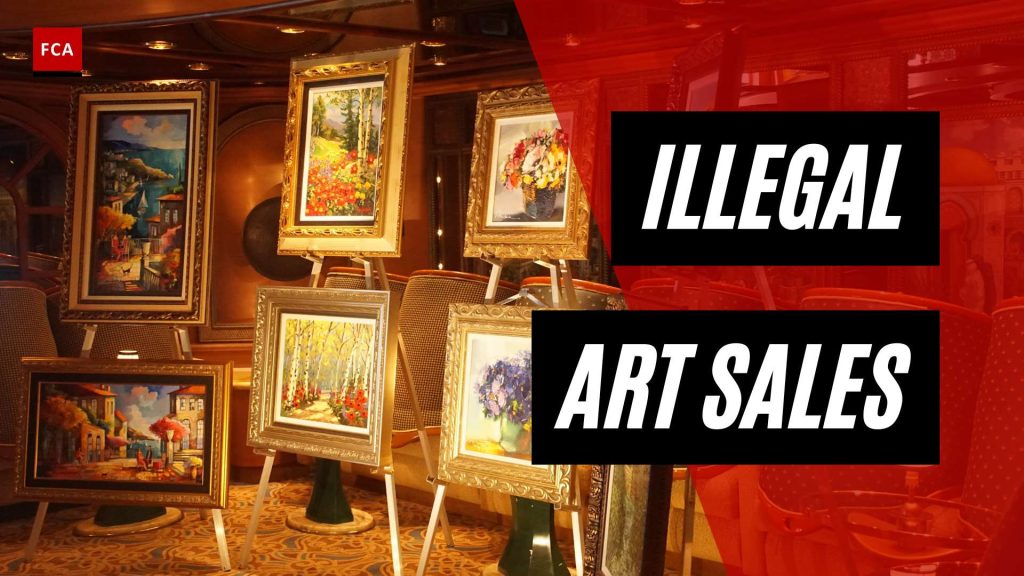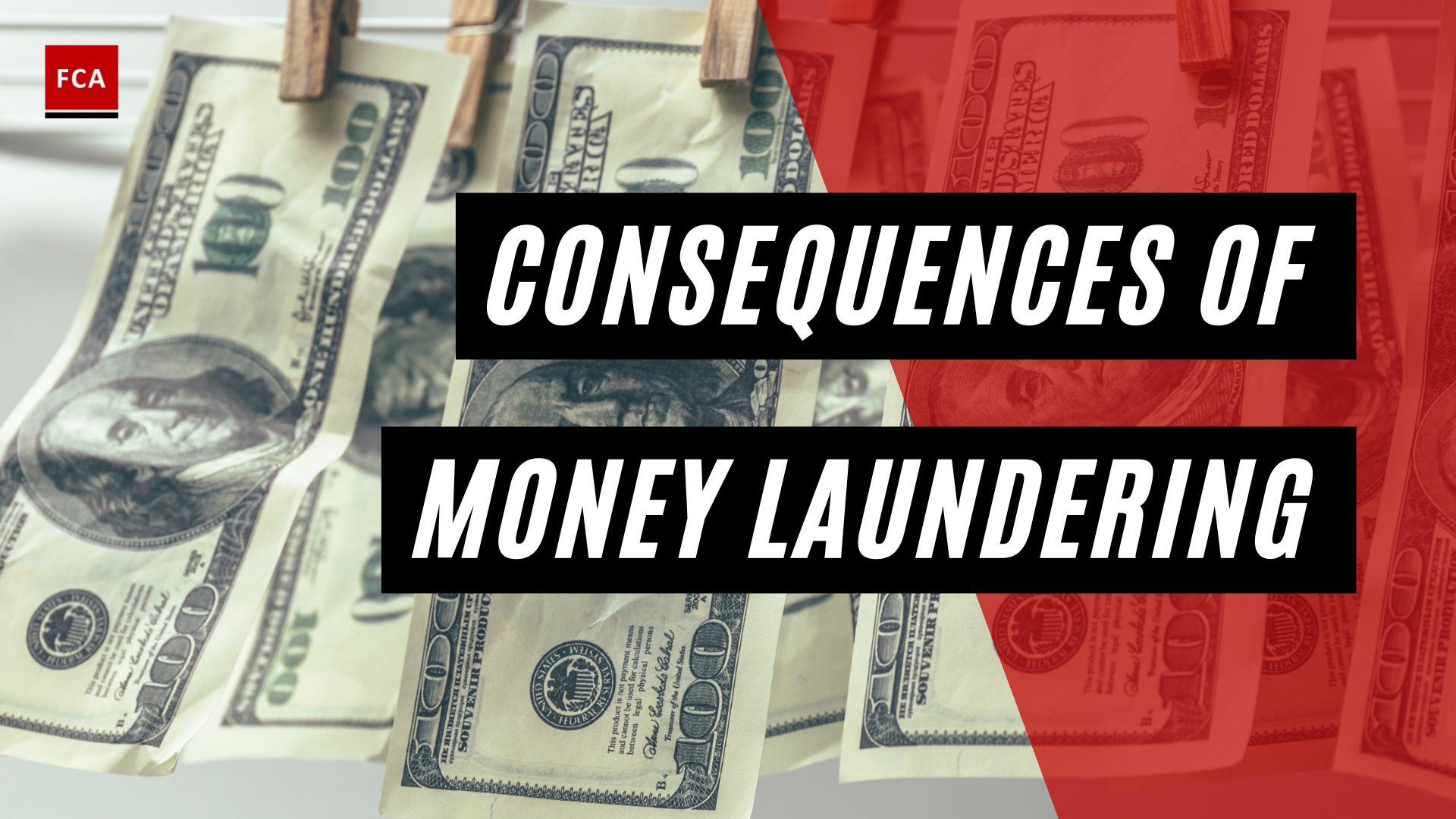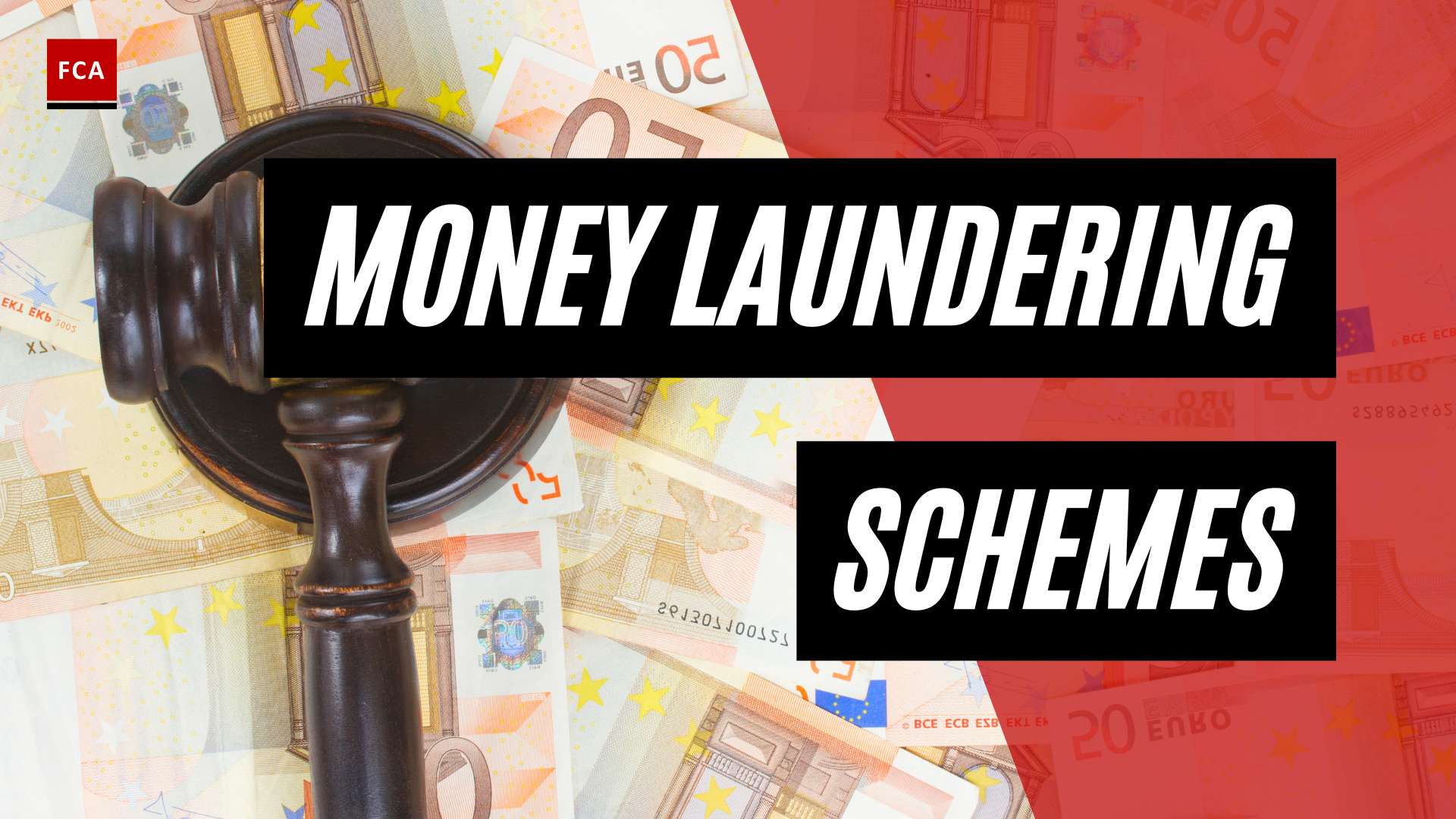Money Laundering through Art and Antiques
Money laundering through art and antiques has emerged as a significant concern in the world of financial crime. Criminals exploit the opaque nature of the art market to launder illicit funds and disguise the origins of their wealth. This section provides an overview of art money laundering, its prevalence, and the risks and challenges associated with combating this form of financial crime.
Overview of Art Money Laundering
Art money laundering refers to the process of using the art market to legitimize illicit funds. Criminals may acquire valuable artworks or antiques with illegally obtained money and then introduce them into the legitimate art market. By doing so, they create a veneer of legality around their funds, making it difficult to trace them back to their criminal origins.
The underground art market plays a crucial role in facilitating art money laundering. Transactions within this market often occur outside the purview of regulatory authorities, enabling criminals to move money discreetly and exploit gaps in anti-money laundering (AML) measures. The lack of transparency and standardized reporting requirements make it challenging to detect and prevent illicit financial flows.
Prevalence of Art Money Laundering
The extent of art money laundering is difficult to quantify due to its clandestine nature. However, numerous high-profile cases and investigations have shed light on the prevalence of this illicit activity. The true scale of the problem is likely much larger than what is currently known or reported.
Art money laundering schemes can involve various methods, such as buying and selling art at inflated prices, using forgeries to deceive buyers and sellers, and exploiting the growing popularity of non-fungible tokens (NFTs) for illicit purposes.
Risks and Challenges in Combating Art Money Laundering
Combating art money laundering poses unique challenges for authorities and financial institutions. Some of the key risks and challenges include:
-
Lack of Regulation: The art market is largely unregulated, making it vulnerable to exploitation by money launderers. The absence of comprehensive AML regulations specific to the art market hampers efforts to detect and prevent illicit financial activities.
-
Complex Transaction Structures: Art transactions often involve multiple intermediaries, complex ownership structures, and the use of offshore entities. These convoluted structures make it difficult to trace the true beneficial owners and track the movement of funds.
-
Valuation Challenges: Determining the true value of artworks is subjective and can vary significantly based on factors such as provenance, artist reputation, and market demand. This subjectivity creates opportunities for money launderers to manipulate prices, making it challenging to identify suspicious transactions.
-
Limited Information Sharing: The lack of standardized reporting requirements and information sharing protocols within the art market hinders effective collaboration among stakeholders involved in detecting and combating art money laundering.
Efforts to address these challenges and strengthen AML measures in the art market are underway. Regulatory initiatives such as the US Anti-Money Laundering Act of 2020 (AMLA 2020) and the EU’s Sixth Anti-Money Laundering Directive (6AMLD) aim to enhance oversight and accountability within the art sector. Additionally, responsible art market initiatives seek to promote transparency, due diligence, and best practices among art market participants.
The connection between the art trade and illicit activities, including links to terrorism and organized crime, further underscores the need for robust measures to combat art money laundering. By addressing the unique risks and challenges associated with this form of financial crime, authorities and stakeholders can work towards protecting the integrity of the art market and preventing the exploitation of art and antiques for illicit purposes.
Money Laundering Schemes in the Art Market
Money laundering through art and antiques is a significant concern in the financial world, involving various schemes to disguise the origins of illegally-obtained funds. These schemes include buying and selling art at inflated prices, forgeries and illegal trafficking, and the emergence of non-fungible tokens (NFTs) as a potential avenue for money laundering.
Buying and Selling Art at Inflated Prices
One common money laundering scheme in the art market involves buying and selling art at inflated prices. This technique allows individuals to transfer illicit funds while creating the appearance of legitimate transactions. By overvaluing artworks, money launderers can move large sums of money without raising suspicion.
Artworks purchased at inflated prices may be sold through auctions, private sales, or art galleries. The inflated prices can be justified using various tactics, such as creating fictitious buyers or sellers, manipulating auction bids, or colluding with individuals within the art market (ComplyAdvantage). These activities make it challenging for authorities to identify and trace the illicit funds involved.
Forgeries and Illegal Trafficking
Forgeries and illegal trafficking also play a significant role in art money laundering schemes. Criminals may create counterfeit artworks to launder money, passing them off as genuine pieces. These forged artworks are then sold or used as collateral for loans, allowing money launderers to introduce illicit funds into the legitimate art market.
Illegal trafficking of artworks, including stolen or looted pieces, is another avenue for money laundering in the art market. Criminals may exploit the lack of transparency and documentation surrounding certain artworks to hide the proceeds of illicit activities. These artworks can be sold through underground art markets or private sales, making it difficult to track their origins and the funds involved.
Non-Fungible Tokens (NFTs) and Money Laundering
The emergence of non-fungible tokens (NFTs) has introduced new possibilities for money laundering in the art market. NFTs are unique digital assets that can represent ownership of digital or physical items, including artworks. Criminals may exploit the subjective pricing and ease of transferable ownership associated with NFTs to launder money.
Money launderers can use NFTs to convert illicit funds into digital assets, creating a veneer of legitimacy. The anonymous nature of transactions and the decentralized platforms used for NFT trading make it challenging for authorities to monitor and regulate these activities. NFTs have gained significant attention in recent years, and their potential vulnerabilities to money laundering are being closely scrutinized (ComplyAdvantage).
As money laundering schemes continue to evolve, it is crucial for regulatory bodies, law enforcement agencies, and the art market to remain vigilant and implement effective measures to combat these illicit activities. By understanding the various techniques employed by money launderers, stakeholders can work towards creating a more transparent and accountable art market.
Regulations and Measures to Combat Art Money Laundering
To address the issue of money laundering through art and protect the integrity of the art market, governments and regulatory bodies have implemented various regulations and measures. These initiatives aim to enhance transparency, strengthen due diligence, and deter illicit activities within the art industry. In this section, we will explore two significant legislations and ongoing efforts in the responsible art market.
US Anti-Money Laundering Act of 2020 (AMLA 2020)
The US Anti-Money Laundering Act of 2020 (AMLA 2020) has brought antiquities dealers under the anti-money laundering (AML) regulatory framework. This legislation imposes comprehensive requirements on participants in the art market, including measures such as identifying beneficial owners, training staff, keeping transaction records, and adopting compliance policies to combat art money laundering (ComplyAdvantage).
The AMLA 2020 acknowledges the potential risks associated with art transactions and seeks to close the loopholes that could be exploited for illicit financial activities. By extending AML obligations to the art market, the US government aims to enhance oversight and prevent the misuse of art as a tool for money laundering.
EU’s Sixth Anti-Money Laundering Directive (6AMLD)
The European Union’s Sixth Anti-Money Laundering Directive (6AMLD) represents the EU’s most robust measures against money laundering to date. It mandates compulsory anti-money laundering (AML) screening and customer due diligence for all participants in the art market (ComplyAdvantage).
Under the 6AMLD, art market participants must implement rigorous AML measures, including customer identification, ongoing monitoring, and suspicious transaction reporting. The directive imposes stricter penalties for non-compliance, reflecting the EU’s determination to combat money laundering activities within the art sector.
Initiatives and Efforts in the Responsible Art Market
Beyond specific regulations, various initiatives and efforts are underway to promote a responsible and transparent art market. These initiatives involve collaboration between stakeholders, including art market participants, governments, and organizations dedicated to promoting ethical practices.
The Responsible Art Market initiative focuses on fostering awareness and best practices to prevent illegal art sales and money laundering. Through this initiative, industry players are encouraged to implement enhanced due diligence measures, adopt compliance programs, and share information to detect and prevent illicit transactions.
Additionally, organizations and associations within the art industry are working together to establish guidelines, codes of conduct, and standards aimed at promoting integrity and combatting money laundering. These efforts contribute to a collective commitment to ensure transparency, accountability, and ethical practices within the art market.
By implementing robust regulations such as the US AMLA 2020 and the EU’s 6AMLD, as well as supporting ongoing initiatives, authorities and industry stakeholders demonstrate their dedication to combating art money laundering and preserving the integrity of the art market. These measures foster a more transparent and responsible environment, deterring illicit activities and protecting the reputation of the art industry.
The Connection Between Art Trade and Illicit Activities
The art trade, while often associated with creativity, culture, and expression, unfortunately, has a dark side that involves various illicit activities. Understanding the link between the art trade and these illicit activities is essential in combating the issue effectively.
Link to Terrorism and Organized Crime
One significant concern is the link between the art trade and terrorism as well as organized crime. Instances have emerged where individuals involved in art trafficking have been connected to terrorist financing. For example, in 2018, antique dealers in Barcelona were arrested on suspicion of financing jihadist terrorism through the illicit trafficking of antiquities from Libya (Netcher). This connection highlights the potential role of the illegal art market in providing a source of funds for these nefarious activities.
Moreover, the involvement of criminal enterprises in the illicit art trade often goes hand-in-hand with other illegal activities, such as drug trafficking, arms smuggling, and money laundering. This convergence of illegal operations makes combating these activities a complex challenge for law enforcement agencies (RAND Corporation). The interconnected nature of these illicit networks necessitates a comprehensive approach in tackling the issue.
International Networks and Trade Routes
The illegal art market operates on a global scale, with international networks and trade routes facilitating the movement of illicit artworks. The clandestine nature of these networks makes it challenging to track and disrupt their operations. Criminal enterprises involved in the illegal art trade capitalize on existing smuggling routes and exploit weak regulation and enforcement mechanisms across borders.
Efforts to combat the illegal art trade require international collaboration and information sharing among law enforcement agencies. The transnational nature of these activities necessitates cooperation at a global level to effectively disrupt the networks involved. Strengthening partnerships and coordination among different countries is crucial in addressing the challenges posed by these international networks (RAND Corporation).
Clandestine Nature of the Illegal Art Market
One of the significant obstacles in combating illegal art sales is the clandestine nature of the market itself. The exact size and scope of the illegal art trade are challenging to determine due to its covert operations. Reliable statistics on the market’s value are scarce, but estimates suggest that it generates billions of dollars annually (RAND Corporation). The lack of transparency and the absence of official channels for these transactions make it difficult for authorities to monitor and regulate the market effectively.
The rise of the internet and digital technologies has further complicated the issue. Online platforms provide opportunities for anonymous transactions, enabling the trade of illicit artworks without proper oversight. Regulating and tracking these activities in the digital realm pose significant challenges for authorities, as they must adapt to new platforms and techniques used by those engaged in illegal art sales (RAND Corporation).
Understanding the link between the art trade and illicit activities, such as terrorism, organized crime, and cross-border networks, is crucial for implementing effective measures to combat illegal art sales. Strengthening international collaboration, regulating online platforms, and addressing the clandestine nature of the market are key steps in combating the illicit art trade and its associated risks.
Combating Illegal Art Sales and Money Laundering
Efforts to combat illegal art sales and money laundering in the art market require a multi-faceted approach involving international collaboration, regulation of online platforms and digital technologies, as well as penalties and legal measures to deter illicit activities.
International Collaboration and Information Sharing
Strong international collaboration and information sharing among law enforcement agencies are crucial in combating illegal art sales and money laundering. These activities often transcend national borders, making it necessary to coordinate efforts at a global level. By sharing intelligence, expertise, and resources, countries can work together to identify and disrupt illicit networks involved in the trade of illegal artworks.
International organizations like Interpol and UNESCO play a vital role in facilitating cooperation among countries and promoting initiatives to combat art-related crimes. Through mutual assistance and joint investigations, law enforcement agencies can enhance their ability to trace and recover stolen artworks, dismantle criminal networks, and bring perpetrators to justice.
Regulation of Online Platforms and Digital Technologies
The rise of the internet and digital technologies has both facilitated and complicated illegal art sales. Online platforms provide avenues for anonymous transactions, making it challenging for authorities to track and regulate such activities (RAND Corporation). To address this issue, regulations and oversight mechanisms are being implemented to ensure transparency and accountability in online art marketplaces.
Governments and regulatory bodies are increasingly focusing on the identification and verification of buyers and sellers, implementation of know-your-customer (KYC) procedures, and monitoring of transactions. By holding online platforms accountable for facilitating illegal art sales and money laundering, authorities can deter illicit activities and foster a more secure and trustworthy environment for art transactions.
Penalties and Legal Measures to Deter Illegal Art Sales
The imposition of penalties and legal measures serves as a deterrent to individuals involved in illegal art sales and money laundering. Countries around the world are enacting legislation to address these issues and ensure compliance with anti-money laundering (AML) regulations.
For example, the US Anti-Money Laundering Act of 2020 (AMLA 2020) expanded the AML regulatory framework to include antiquities dealers. This mandates measures such as identifying beneficial owners, training staff, keeping transaction records, and adopting compliance policies to combat art money laundering (ComplyAdvantage). Similarly, the European Union’s Sixth Anti-Money Laundering Directive (6AMLD) imposes stricter regulations on the art market to enhance transparency and prevent money laundering.
Moreover, countries are increasing the penalties associated with illegal art sales and money laundering. Fines, imprisonment, and asset confiscation are some of the punitive measures implemented to deter individuals from engaging in illicit activities. For instance, Spain introduced new regulations in 2022 that criminalize the resale of art purchased illegally, with penalties including fines and imprisonment for up to four years (Éducaloi).
By combining international collaboration, regulation of online platforms, and strong legal measures, authorities can make significant strides in combating illegal art sales and the associated money laundering activities. These efforts aim to safeguard the integrity of the art market and protect cultural heritage from exploitation and illicit trade.
Art Theft and its Impact on Money Laundering
Art theft plays a significant role in facilitating money laundering through art and has become a lucrative business for criminals. This section explores the lucrative nature of art theft, measures to prevent art theft and illegal sales, and the importance of national databases and stolen art registers in combating this illicit trade.
Lucrative Nature of Art Theft
Art theft is a highly profitable enterprise, with estimates indicating that art thefts are valued at around $6 billion globally annually. Stolen art pieces often end up in private collections or are sold illegally on the black market, providing a means for criminals to generate substantial profits. The high value of stolen art makes it an attractive target for criminals seeking to exploit the art market for money laundering purposes.
Measures to Prevent Art Theft and Illegal Sales
Preventing art theft and illegal sales requires a multi-faceted approach involving various stakeholders, including law enforcement agencies, art institutions, collectors, and the public. Some key measures to prevent art theft and illegal sales include:
-
Enhanced security measures: Art institutions, museums, and galleries can implement robust security systems, including surveillance cameras, alarms, and secure display cases, to deter theft and protect valuable artworks.
-
Public awareness and education: Raising awareness among the general public about the importance of art preservation and the consequences of participating in the illegal art trade can help reduce demand for stolen artworks. Education programs and public campaigns can play a crucial role in this regard.
-
Collaboration and information sharing: Establishing strong partnerships and promoting information sharing between law enforcement agencies, art institutions, and collectors can enhance efforts to prevent and recover stolen art. Interpol’s International Database of Stolen Art (IDOA) serves as a valuable resource for sharing information on stolen art internationally.
National Databases and Stolen Art Registers
Countries like Sweden have taken proactive steps to combat art theft by establishing national databases of stolen art. These databases serve as centralized repositories of information about stolen artworks, enabling authorities, art institutions, and collectors to quickly identify and recover stolen pieces. By cataloging stolen art and sharing this information with relevant stakeholders, the illegal sale and trade of stolen artwork can be significantly hindered (Éducaloi).
The establishment of national databases and stolen art registers allows law enforcement agencies to track stolen artworks more effectively, facilitates cooperation between countries, and helps identify and apprehend individuals involved in the illegal art trade. These initiatives play a crucial role in disrupting the illicit flow of stolen art and combating the associated money laundering activities.
By implementing measures to prevent art theft, raising public awareness, and establishing comprehensive databases of stolen art, authorities can mitigate the impact of art theft on money laundering. These efforts contribute to the overall fight against illegal art sales, protecting the integrity of the art market and safeguarding cultural heritage.








